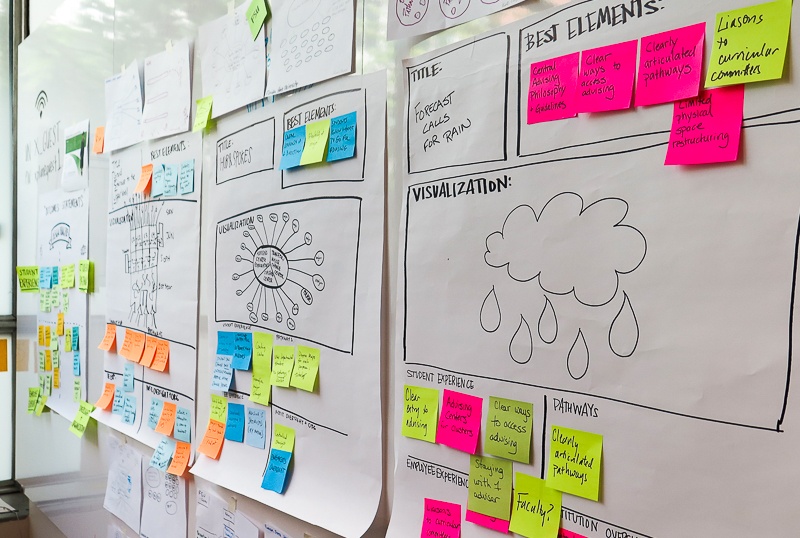Why should executives care about visualization in their management style?
Dave Gray: Visualization makes information more tangible, more concrete, and more actionable. Visuals allow you to be more clear when you communicate as a manager. When you’re more clear, people understand you better. When they understand you better, they’re more likely to make better decisions, faster. And when they make decisions, they’re more likely to act on the information that you give them. When you drive your employees to take action, it delivers results. In business, we care about results. In the end, being more clear and more visual in your communications can improve your business results.
What is a real-life example where visualization made the difference, where the use of pictures in management provided a lot of value that otherwise couldn’t have been provided?
Start changing your company culture. Start communicating visually. |
DG: XPLANE worked with a global telecom provider. They had developed a business strategy and operating plan for the upcoming year, and broken it down as a pyramid with the goals at the top cascading down throughout the organization. It was a very large and very complex image. It wasn’t engaging. It was concrete. It was hard to understand and not actionable.
The company called upon XPLANE to help them visualize the strategy, get more people involved, and help explain to all levels of the company how to apply the strategy practically in their daily work.
Before we began, I asked them, “Well, how did you roll out the strategy last year?” Our client explained a situation that most companies are familiar with: “Last year, the CEO stood up and gave a 90-minute talk with a giant strategic diagram behind him. He talked about the strategy for 90 minutes and that was the last time anyone had a conversation about the strategy.”
That didn’t work. They wanted to do it differently.
We brought the senior team that had been responsible for developing the plan around a table and worked together to visualize their ideas. Everyone had a Sharpie in their hand and were drawing ideas, processes, and strategies. It was very powerful and engaging. Through a few sessions, we came up with a series of images to represent components of the strategy and used them to create PowerPoint presentations, posters, interactive PDFs, and more.
In the old way of rolling out their strategy, there wasn’t a lot of dialogue between the managers and the employees about how to implement it because they weren’t speaking the same language. The managers were talking about the strategy in a very abstract, very logical way. People didn’t understand why they should get excited about it, why they should be motivated, and how they could engage with it. They didn’t understand in any practical way how that would apply in their daily work or how to translate that into action. Moving from boxes and lines to tackling “what do I do every day” was not an easy translation to make, but crossing that bridge enabled them to implement their strategy much more effectively, and is now a part of the way that they do things.
How can we put into practice what you’ve been showing us? In other words, how can a manager go about using the power of visualization and visual communications?
DG: Visual thinking is new to a lot of people. As you start to use visual information, you’ve got to think about not only the logical Venn diagrams and trend charts, but the different employees and roles within your organization and how they’re affected as well. What are the metaphors that are going to engage the organization? What are the practical, how-to, step-by-step guidelines that people are going to need to do their daily work?
The biggest barrier to getting a piece of paper and drawing a picture is not really drawing skill, it’s cultural. You could draw when you were five. What happened was now you started to get less comfortable with it. You started to develop inhibitions about drawing, especially drawing in front of other people.
As a senior executive, the most important thing that you can do is set an example that you’re not afraid to draw a simple picture, that you don’t need everything that you communicate to be a fancy, slick logo, PowerPoint slide, that you can get on a piece of paper, or you can step up to a whiteboard, and you can draw your vision. Get people comfortable with the idea that you are not just a talking head on a TV screen, that you’re actually involved and engaged with the organization.
And it doesn’t have to be difficult; you can start with a workshop. Bring in a company who can help your team learn about some of these design principles and start thinking visually. It doesn’t have to be a huge leap. There are cultural challenges, just like there are with implementing any new technology or any new practice within an organization, so it does take some time, and it does take really giving people a chance to try something that’s very new, and let them feel comfortable with it.
